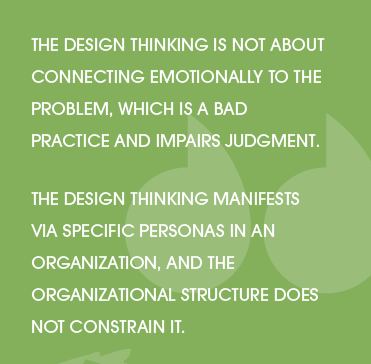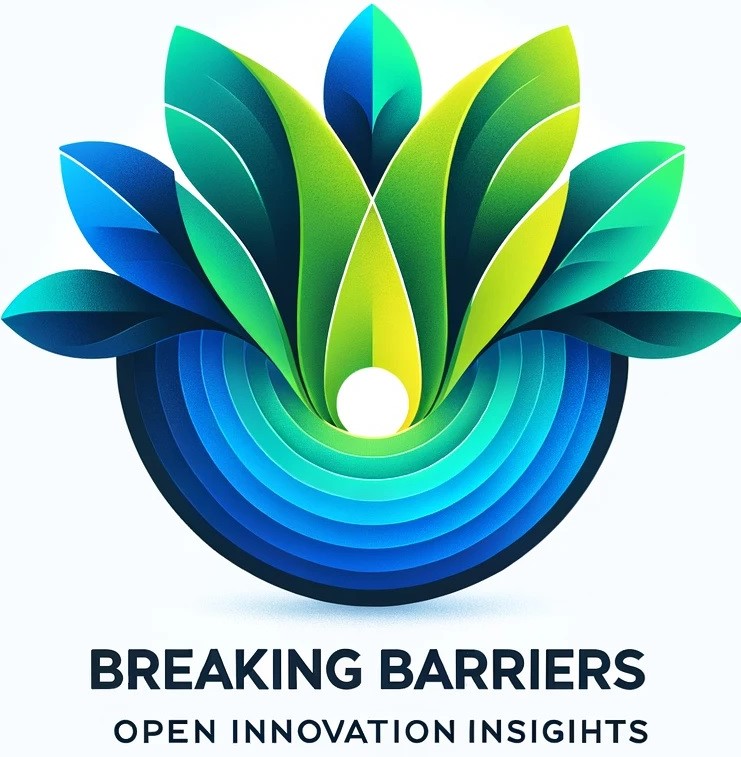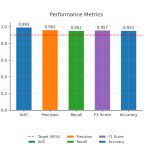
In the context of lean-agile delivery, innovation, entrepreneurship, and product management, the term ‘Design Thinking’ frequently surfaces, sparking curiosity and questions. What exactly is Design Thinking? How does it differ from the concept of mere innovation? This article, delves into these questions, unraveling the essence of Design Thinking and its unique role in shaping modern business strategies and solutions.
Drawing from diverse experiences in the pharma and biotech functions, I’ve come to appreciate the multifaceted nature of innovation. This has led me to a considered understanding of design thinking, which I believe can be best described as follows –
“Design Thinking is a dynamic and creative problem-solving approach characterized by its human-centric and environmentally aware ethos. It embodies empathy and sensibility, encouraging a deep understanding of the user’s needs and the context in which they exist. This methodology transcends mere aesthetic or functional design; it’s an imaginative journey that seeks innovative solutions beyond the conventional.
Design Thinking promotes a comprehensive perspective applicable across organizations of varying sizes and complexities. It focuses on creating solutions that are not only desirable, meeting the genuine needs of customers, but also feasible, aligning with an organization’s capabilities, and viable, offering value for which customers are willing to pay. This approach integrates purposeful design with practicality, ensuring that solutions are theoretically sound and tangibly beneficial.“
In design thinking, a crucial understanding is that the likelihood of success in any endeavor is intrinsically linked to the assumptions underpinning it. A design thinker approaches these with a critical and open mindset, recognizing the need for adaptability and continuous learning. Unlike conventional approaches that often adhere to rigid, rules-based frameworks, design thinking advocates for a more fluid, principles-first approach. This prioritizes core values and guiding principles that foster innovation rather than confining it. Such an approach is instrumental in organizations where strict adherence to rules-based principles can inadvertently stifle creativity and innovation. In design thinking, the underlying values and flexible principles drive decision-making, paving the way for more innovative and effective solutions.
Upon closer examination, it becomes evident that a design thinking practitioner adopts a mindset that prioritizes the early identification and validation of assumptions, particularly those potentially critical or ‘killer’ assumptions. Consider the example of a driver embodying the design thinking approach: instead of impulsively honking at an erratic driver ahead, a design thinker would first subtly adjust their position to the left or right. This maneuver is to see the driver’s behavior more clearly and gain a comprehensive view of the road conditions ahead. Such a habit of observation, aimed at obtaining a holistic understanding before reacting, is a core element of design thinking. It cultivates empathy, a trait intrinsically linked to creativity and emotional intelligence. Creativity, as we recognize, is a cornerstone of innovation. Therefore, being innovative is, in its essence, a byproduct of the conscientious application of design thinking principles.
For example, in the healthcare industry, where innovation can significantly impact patient outcomes, the philosophy of Design Thinking takes on a critical role. A design thinker’s mindset recognizes that the success of any endeavor, be it developing a new medical device or implementing a patient care protocol, hinges on the validity of the underlying assumptions. This approach values principles and patient-centric values over rigid, rules-based protocols. For instance, in designing a user-friendly electronic health record (EHR) system, a design thinker would prioritize ease of use and accessibility for healthcare providers, focusing on improving patient care rather than merely adhering to technical specifications. This shift from a rules-dominated framework to a value-driven approach fosters an environment where innovative solutions can emerge, leading to more effective and personalized patient care. By integrating Design Thinking, healthcare organizations can move beyond conventional boundaries, enabling transformative changes that benefit practitioners and patients alike.
A frequent inquiry I encounter revolves around the tangible benefits of employing Design Thinking in problem-solving. When organizations and individuals consciously integrate Design Thinking into their framework, it creates a dynamic and nurturing environment akin to an ‘innovation ecosystem.’ Much like a thriving coral reef, this ecosystem fosters a culture where employees’ creativity and evolutionary skills are not just encouraged but essential components of growth. In such an environment, innovation is not an isolated goal or an afterthought but an integral part of the organizational DNA. As a coral reef strengthens and diversifies over time, an organization grounded in Design Thinking principles similarly evolves. Here, innovation is seamlessly woven into every aspect of the organization’s operations, ensuring that it’s not just an additional task but a natural outcome of its core functioning.
Here are a few examples illustrating how design thinking principles are being applied in the Biotech Industry:
- Drug Development and Personalized Medicine: Biotech companies are applying design thinking to develop more targeted and personalized medical treatments. They can design customized therapies by empathizing with patients’ unique genetic profiles and health needs. This approach leads to more effective treatments with fewer side effects, ultimately improving patient outcomes.
- Diagnostic Tools Design: Design thinking is used to create more user-friendly diagnostic tools. By understanding patients’ and healthcare providers’ needs and challenges, biotech firms can design diagnostic equipment that is easier to use, more accurate, and less invasive. This improves the patient experience and aids in more effective disease management.
- Agricultural Biotechnology: Design thinking helps develop solutions tailored to specific environmental and ecological challenges in agricultural biotech. By empathizing with farmers and understanding the unique conditions of different agricultural regions, biotech firms can design seeds and agricultural products that are more resilient, yield better crops, and are more sustainable.
- Bioreactors and Laboratory Equipment Design: Design thinking aids in creating more efficient and user-friendly bioreactors and laboratory equipment. By understanding laboratory technicians’ and scientists’ workflow and challenges, companies can design equipment that simplifies processes, increases efficiency, and reduces the likelihood of errors.
- Healthcare Data Management: Biotech companies utilize design thinking in developing healthcare data management systems. By empathizing with healthcare providers and patients, they can design more intuitive, secure, and effective systems for managing and interpreting large volumes of health data, thus aiding in better health outcomes.
- Vaccine Development: In response to global health crises like the COVID-19 pandemic, biotech firms have used design thinking to develop and distribute effective vaccines rapidly. By understanding the urgent needs of populations and the logistics of global distribution, they were able to design development and deployment strategies that were both rapid and scalable.
These demonstrate how design thinking in the biotech industry is not just about the end product but also involves understanding the entire ecosystem of users, processes, and environmental factors, leading to more innovative and effective solutions.
“Design Thinking begins with introspection, an inward journey of questioning that lays the foundation for understanding complex challenges. This reflective process then extends outward, adopting an empathetic lens to explore the needs and perspectives of others. The result? Surprisingly creative and holistic solutions, marked by their purposefulness and meaningful impact. Imagine the transformative potential when design thinkers apply these principles to reshape organizations, societies, and ecosystems. Historical leaders like Mahatma Gandhi, Abraham Lincoln, and Martin Luther King Jr. exemplified this approach. Their ability to combine deep self-reflection with empathetic understanding made them leaders and design thinkers in their own right, demonstrating the profound impact this mindset can have on the world.“

A non-profit –Stories for kids sourced from around the world resulted from a visit to drop food for families at the Children’s Hospital in Boston with my wife and her friend. These families travel from all over the world; they often have language barriers and only enough cash to treat their kids medically. To spend money on food is probably the last thing on their mind. I wouldn’t have come up with this idea without being in a position to experience the environment – the context and perspective of these families with sick kids. There was a sudden empathy that led me to ask myself – What can I do? How can I uplift these kids or any child facing hardship anywhere in the world by applying my education, passion for innovation, and experience in building products and services?
While teaching a cohort on agile and lean practices, someone asked me, “how do you encourage leaders (or anyone) to incorporate design thinking into how they operate. Also, how can we use design thinking approach in our job setups that are highly structured and regulated”. It’s often a case in highly regulated industries like healthcare, pharma.
It’s a widespread misconception that organizational structures and constraints don’t let us practice design thinking and innovate. The design thinking manifests via specific personas in an organization, and the organizational structure does not constrain it. To let design thinking gradually seep into the culture, leaders should recognize and develop employees on a few personas and avoid focusing too much on roles and responsibilities. The roles & responsibilities instruct employees on what’s expected of them, whereas personas are like mindful mentors that guide from within. These personas are not mere social portrayals of individuals’ personalities but self-infused principles and values that guide employees towards empathetic problem-solving irrespective of their surroundings, organizations size, maturity, knowledge area, and setup.
As a life-timer scholar and practitioner of design thinking, and as I often retrospect and reflect on my 25+ years of professional career and experience. I realize that design principles and values always provided the foundation and acted as an anchor to expedite my learning. Anyone can become a design thinker. And, to begin applying design thinking, start by consciously immersing a few personas into your way of working. When practiced, these personas within the scope of roles & responsibilities become habits for design thinking and a mindful food for innovation. Though, as per ” The Ten Faces of Innovation by Tom Kelly” there are ten personas, my favorite include:
An Anthropologist persona has traits to observe with an open mind, empathy; intuition; the ability to see things that nobody noticed; and a way of seeking inspiration in unusual places. An Anthropologist persona is the most potent persona in design thinking but simple to practice in any organization.
A Cross-Pollinator persona applies knowledge from unrelated domains to find solutions to a problem in a new environment. It’s amazing how our mind makes connections to incept creative ideas by mixing expertise and experience from unrelated domains.
A Set Designer persona believes that any environment for problem-solving is like what stage is to an artist. The set designer persona has its origin in frugality and, therefore, frugal innovations.
I believe individuals in any role can immerse design thinking into their way of working by conscious adoption of these personas at their jobs.













